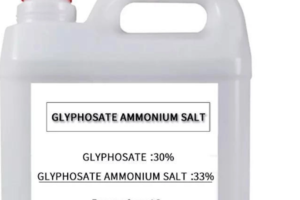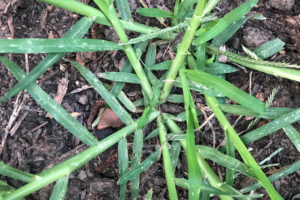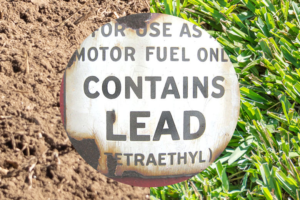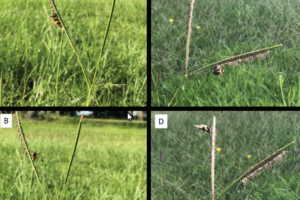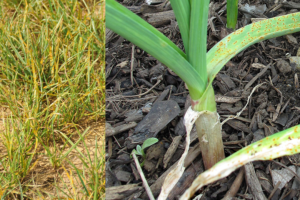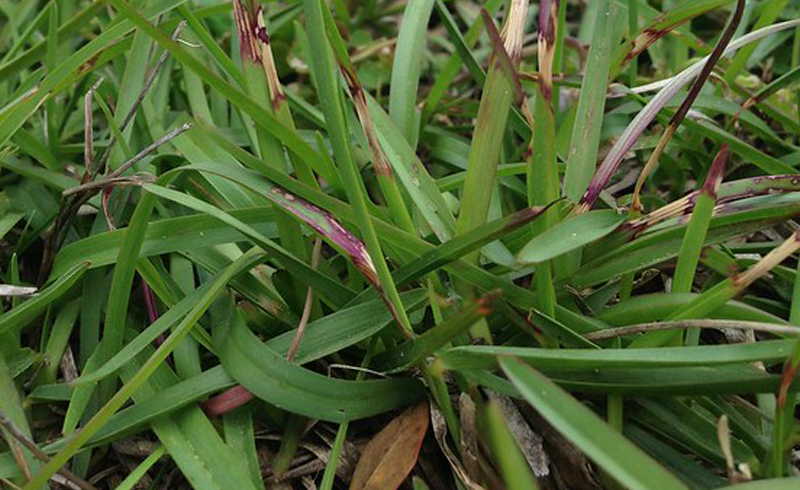
Introduction
The Importance of Cold Tolerance in Grasses
For anyone who’s ever tried their hand at gardening or landscaping, you’ll know that not all grasses are created equal. Some thrive in the blazing sun, while others prefer the cool shade. But there’s one challenge that many gardeners face, especially in areas with chilly winters: cold tolerance. Just like we bundle up in jackets and scarves, plants, especially grasses, need their mechanisms to handle the cold. Cold tolerance is the ability of a plant to withstand the harsh conditions of winter without getting damaged. For gardeners and landscapers, this means a lawn that remains lush and green even after the winter snow melts.
Meet the Centipedegrass
Now, let’s talk about a particular grass that many gardeners love – the centipedegrass. It’s a favorite for many because of its fine texture and ability to create a beautiful, dense turf. But there’s a catch. While centipedegrass is a warm-season grass, which means it loves the sun and heat, it has a bit of a challenge when the temperatures drop. In colder conditions, centipedegrass can struggle, leading to shorter green periods and potential damage from frost. This is where the magic of science comes in. Researchers have been diving deep into centipedegrass to understand how it reacts to cold and whether it can be more resilient.
This introduction sets the stage for the reader, highlighting the importance of cold tolerance and introducing them to the world of centipedegrass. It’s designed to engage the average gardener or landscaper, providing context for the deeper scientific exploration in the rest of the article.
The Centipedegrass Story
Origins and Popularity
Despite its exotic-sounding name, Centipedegrass is a familiar sight for many gardeners, especially in the southern parts of the United States. Originating from China and Southeast Asia, this grass found its way to American lawns in the early 20th century. Its popularity soared not just because of its beautiful, fine texture but also due to its low maintenance needs. Imagine grass that doesn’t demand frequent mowing or a ton of water! For many homeowners, centipedegrass was the answer to their lawn dreams, offering a lush, green carpet without the usual gardening headaches.
However, every hero has his Achilles’ heel. Its vulnerability to cold temperatures became evident for centipedegrass as gardeners tried planting it in regions with cooler climates. While it thrived in warmth, the cold months posed a significant challenge, often leading to brown and damaged turf patches once spring arrived.
The Science Behind Its Cold Sensitivity
You might wonder why this grass struggles so much with the cold. It all boils down to its genetic makeup. Just as humans have genes that determine traits like hair color or height, plants have genes that influence their growth and response to environmental factors. For centipedegrass, its genes are more attuned to warm climates, making it a superstar in the heat but weak in the cold.

Researchers, with their love for understanding the nitty-gritty of nature, decided to delve deeper into the genetic story of centipedegrass. By studying its DNA and how it reacts to cold, they hoped to uncover the secrets behind its cold sensitivity. Their aim? To find ways to help this beloved grass withstand the chill and remain a favorite choice for gardeners, regardless of the climate.
The Science Behind Cold Stress in Plants
What is Cold Stress?
When we think of stress, we often picture a busy day at work or the challenges of daily life. But did you know plants experience stress too? In the plant world, cold stress happens when temperatures drop significantly, and plants find it hard to cope. Just as we feel the chill and need to bundle up in jackets, plants, in their way, feel the cold and react to it. However, unlike us, they can’t move indoors or turn up the heat. Instead, they rely on their internal mechanisms to protect themselves.
For plants, cold stress isn’t just about feeling chilly. It’s a real threat that can hinder their growth, damage their cells, and in severe cases, even kill them. When temperatures plummet, the water inside a plant can freeze, causing ice crystals to form. These ice crystals can puncture cell walls, leading to a loss of essential fluids and nutrients. It’s akin to a human suffering from hypothermia, where the body’s core temperature drops, causing severe physical distress.

How Do Plants Respond?
Plants are incredible survivors, having evolved to adapt to various challenges over millions of years. When faced with cold stress, they don’t just sit there and freeze; they fight back! Plants have a series of defense mechanisms that kick in when temperatures drop. Think of it as their version of a winter survival kit.
One of the first things plants do is alter their cell membranes. Changing the composition of fats and proteins in their cells makes the membranes more flexible, preventing them from getting damaged by ice crystals. It’s like adding antifreeze to a car in winter to stop the engine from freezing.
Additionally, plants produce special proteins called ‘antifreeze proteins.’ These proteins prevent ice from forming inside the plant, ensuring the water remains liquid, even in freezing conditions. It’s a remarkable adaptation that helps many plants survive in cold climates.
Lastly, plants also produce sugars and other compounds that act as internal antifreeze. These compounds lower the freezing point of water inside the plant, allowing it to stay liquid at colder temperatures. This is similar to how salt is used on roads in winter to melt ice. The presence of salt lowers the freezing point of water, preventing ice from forming. In plants, these natural antifreeze ensure their vital processes can continue, even in the cold.
The Molecular Response to Cold
Plants’ Internal Alarm System
Just like when our body senses a temperature change and we start to shiver, plants have an internal alarm system that alerts them to cold conditions. This isn’t about feeling cold in the way we do but more about a molecular reaction that happens inside the plant. When temperatures drop, specific genes in the plant get activated. These genes are switches that turn on the plant’s defense mechanisms against the cold.
Once these “cold genes” are activated, they produce proteins to protect the plant from freezing temperatures. Our body produces more white blood cells when we’re sick. These proteins help the plant in various ways, from preventing ice formation to ensuring that the plant’s cells remain flexible and are not damaged by the cold.
Understanding the Role of Transcription Factors
How do plants know which genes to activate and when? This is where something called “transcription factors” come into play. In simple terms, transcription factors are like the managers of a factory deciding which machines (or genes) need to be turned on to produce a particular product (or protein).
When a plant senses cold, these transcription factors emerge, identifying the genes that must be activated to defend against the cold. They then bind to these genes, turning them on and ensuring that suitable proteins are produced. It’s a highly coordinated process, ensuring the plant has the best chance of surviving the cold.
For gardeners and landscapers, understanding this molecular response can be beneficial. By choosing plants with strong transcription factors and cold-responsive genes, they can ensure that their gardens remain vibrant and healthy, even in colder conditions. It’s like choosing the right tools for a job, ensuring success and longevity.
The Power of Modern Sequencing Techniques
Decoding the Plant’s Blueprint
Imagine if plants came with a manual that told us everything about them – how they grow, what they need, and how they react to different conditions. Well, in a way, they do! Every plant has DNA, like its unique blueprint or instruction manual. Modern sequencing techniques allow scientists to read this blueprint, much like we’d read a book, but instead of words, they’re looking at genes.
By “reading” a plant’s DNA, scientists can understand much about it, from its growth patterns to how it reacts to stress like cold temperatures. For gardeners and landscapers, this is like having insider knowledge. Knowing what’s written in a plant’s DNA can help them make informed decisions about which plants to choose and how to care for them.
The Revolution of Next-Generation Sequencing
Reading a plant’s DNA would have been a dream a few decades ago. But with the advent of next-generation sequencing, it’s now a reality. This technology is like a super-powered magnifying glass that lets scientists see every letter in a plant’s DNA.
For the gardening community, this is groundbreaking. Scientists can quickly identify which plants are more resilient to conditions like cold or drought. They can even pinpoint specific genes that give plants these abilities. In the future, gardeners may be able to pick plants based on their DNA, ensuring they get the best fit for their garden’s conditions.
In essence, next-generation sequencing opens up a world of possibilities for gardening and landscaping. It provides a deeper understanding of plants at a molecular level, ensuring that gardens look good and are resilient and sustainable.
Key Findings: Cold Resistance in Centipedegrass
The Natural Resilience of Centipedegrass
Centipedegrass is like a friend who wears shorts in winter and seems unfazed by the cold. This grass can withstand cooler temperatures, which is a big win for gardeners and landscapers. But why is this grass so tough? Scientists dived deep into its DNA to find out.
Their research revealed that Centipedegrass has specific genes that activate when the temperature drops. Think of these genes as the plant’s internal thermostat. When it gets cold, these genes “turn on” and help the grass cope with the chilly conditions. Centipedegrass is a reliable lawn choice for gardeners, especially in areas where temperatures can dip.
The Role of Proteins and Hormones
It’s not just about genes, though. When the cold-resistant genes in Centipedegrass get activated, they produce particular proteins and hormones that protect the plant. Imagine these proteins as tiny blankets wrapping around the grass’s cells, keeping them warm and safe from the cold.
These proteins and hormones ensure the grass remains healthy during cold spells. They help maintain the cell’s structure and ensure all its processes run smoothly, even in less-than-ideal conditions. Understanding this can help landscapers choose the proper care routines for Centipedegrass during colder months, ensuring the lawn remains lush and green.
The combination of specific genes, proteins, and hormones makes Centipedegrass a champion for cold resistance. It’s nature’s way of ensuring that the grass thrives, come rain or shine (or snow!).
Implications for Gardeners and Landscapers
A Reliable Choice for Varied Climates
For gardeners and landscapers, the resilience of Centipedegrass to cold is a game-changer. It means that this grass can be a reliable choice for areas that experience occasional cold snaps or even prolonged chilly seasons. No more fretting over frosty mornings or unexpected cold fronts! With Centipedegrass, you have a lawn that’s built to withstand the challenges of fluctuating temperatures.
Moreover, this adaptability can save both time and money. Instead of constantly reseeding or overhauling a lawn damaged by cold, gardeners can enjoy a more consistent and lush green space throughout the year. It’s a win-win: less maintenance hassle and a beautiful lawn to show off!
Tailored Care for Enhanced Cold Resistance
While Centipedegrass naturally possesses cold-resistant traits, understanding the science behind its resilience can help gardeners and landscapers provide even better care. Knowing what’s happening at the molecular level, they can tailor their lawn care routines to enhance the grass’s cold resistance further.
For instance, during the onset of colder months, one might consider specific fertilizers that support the grass’s natural cold-resistant processes. Or, understanding the grass’s internal “thermostat” can guide watering schedules, ensuring the lawn remains hydrated without overdoing it. A little knowledge can go a long way in ensuring Centipedegrass survives and thrives during colder periods.
In conclusion, the scientific insights into Centipedegrass’s cold resistance aren’t just for researchers in lab coats. They offer practical, actionable knowledge for anyone looking to have a stunning lawn year-round.
Conclusion
A Grass Revolutionized by Science
The world of gardening and landscaping is ever-evolving, with discoveries and advancements reshaping how we approach our green spaces. The research on Centipedegrass is a testament to this evolution. By delving deep into the molecular mechanisms of this grass, scientists have unveiled its remarkable ability to withstand cold, a trait that can redefine lawn care in varied climates. For the average gardener or landscaper, this means a more resilient lawn, fewer worries about cold snaps, and a beautiful green space that stands the test of time and temperature.
Moreover, the insights from this research aren’t just limited to Centipedegrass. They open doors to understanding other plant species better, potentially leading to more robust gardens and landscapes in the future. It’s an exciting time to be involved in gardening and landscaping, with science as a valuable ally in our quest for the perfect lawn.
Empowering Gardeners with Knowledge
Knowledge is power, and in gardening, it’s the power to cultivate, nurture, and transform. The findings on Centipedegrass offer gardeners and landscapers a deeper understanding of what makes this grass tick, allowing them to make informed decisions about lawn care. Whether choosing the right fertilizer, adjusting watering schedules, or simply appreciating the intricate processes beneath our feet, this knowledge empowers us all.
In wrapping up, it’s essential to recognize the blend of nature and science in shaping our outdoor spaces. As we continue to learn and grow, both as gardeners and as a community, the future of landscaping looks bright, green, and incredibly promising.
FAQ
What makes Centipedegrass unique?
Centipedegrass is known for its cold resistance, making it a preferred choice for many gardeners and landscapers. Recent research has delved into the molecular mechanisms behind this trait, offering insights into its resilience.
How does cold stress affect plants?
Cold stress can hinder plant growth, damage cellular structures, and even lead to plant death. Plants, like Centipedegrass, have evolved mechanisms to cope with these stresses, ensuring their survival in varying climates.
Why is understanding the molecular response to cold important?
By understanding the molecular response, researchers can pinpoint the genes and pathways that help plants like Centipedegrass withstand cold. This knowledge can lead to the development of even more resilient plant varieties in the future.
How do modern sequencing techniques benefit this research?
Modern sequencing techniques allow scientists to analyze vast amounts of genetic data quickly. This accelerates research, helping identify key genes and pathways responsible for traits like cold resistance in plants.
What were the key findings about Centipedegrass’s cold resistance?
The research identified specific genes and molecular pathways that Centipedegrass activates in response to cold stress. These findings provide a blueprint of the grass’s cold resistance mechanism.
How can gardeners and landscapers benefit from these findings?
With a deeper understanding of Centipedegrass’s resilience, gardeners and landscapers can make informed decisions about lawn care, ensuring healthier and more robust green spaces.
Are there other plants with similar cold resistance mechanisms?
While the research focused on Centipedegrass, the findings open doors to studying other plant species, potentially uncovering similar cold resistance mechanisms in them.
How does this research shape the future of gardening and landscaping?
The insights from this research empower gardeners with knowledge, leading to better lawn care practices. Additionally, it paves the way for developing more resilient plant varieties, shaping the future of gardening and landscaping.
Credits:
Liu, Yingjie, Xiong, Yi, Zhao, Junming, Bai, Shiqie, Li, Daxu, Chen, Limin, u. a. (2023): Molecular Mechanism of Cold Tolerance of Centipedegrass Based on the Transcriptome. International Journal of Molecular Sciences, 24 (2), S. 1265 Online verfügbar unter: URL: https://dx.doi.org/10.3390/ijms24021265

Bob Green, a passionate lawn care enthusiast with over two decades of landscaping experience, is this website’s proud owner. His vast knowledge of horticulture and dedication to helping homeowners maintain beautiful lawns are reflected in the valuable content he shares on his platform. John has always been interested in Agrostology.









